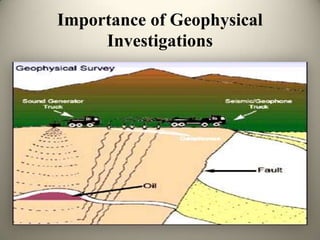All Categories
Featured
Table of Contents
What Are Geophysical Surveys & Why Do They Matter in Mariginup Australia 2022
Time piece from 23 to 25ns. This last slice is now almost all blank, however a few of the walls are still showing highly.
How deep are these slices? The software application I have access to makes estimating the depth a little challenging. If, nevertheless, the leading 3 pieces represent the ploughsoil, which is most likely about 30cm think, I would think that each piece is about 10cm and we are only getting down about 80cm in overall.

Thankfully for us, most of the sites we have an interest in lie simply below the plough zone, so it'll do! How does this compare to the other techniques? Comparison of the Earth Resistance information (top left), the magnetometry (bottom left), the 1517ns time piece (leading right) and the 1921ns time slice (bottom left).
Gravity Geophysical Survey Method in Booragoon Aus 2023
Magnetometry, as gone over above, is a passive technique determining regional variations in magnetism against a localised absolutely no value. Magnetic susceptibility study is an active strategy: it is a procedure of how magnetic a sample of sediment might be in the presence of a magnetic field. How much soil is tested depends upon the size of the test coil: it can be very little or it can be fairly large.
The sensing unit in this case is very small and samples a tiny sample of soil. The Bartington magnetic vulnerability meter with a large "field coil" in usage at Verulamium during the course in 2013. Top soil will be magnetically enhanced compared to subsoils simply due to natural oxidation and decrease.
By determining magnetic susceptibility at a reasonably coarse scale, we can spot areas of human profession and middens. Unfortunately, we do not have access to a trusted mag sus meter, however Jarrod Burks (who assisted teach at the course in 2013) has some outstanding examples. Among which is the Wildcat website in Ohio.
Services Geophysical - Utility Survey Corp. in Melville Australia 2023
These villages are typically laid out around a main open area or plaza, such as this reconstructed example at Sunwatch, Dayton, Ohio. The magnetic susceptibility study assisted, nevertheless, define the main location of occupation and midden which surrounded the more open location.
Jarrod Burks' magnetic vulnerability survey results from the Wildcat site, Ohio. Red is high, blue is low. The method is therefore of great usage in defining areas of basic occupation rather than determining particular features.
Geophysical surveying is an applied branch of geophysics, which uses seismic, gravitational, magnetic, electrical and electro-magnetic physical methods at the Earth's surface to determine the physical residential or commercial properties of the subsurface - Geophysical Survey Requirements In California Waters in Beeliar Aus 2020. Geophysical surveying techniques typically determine these geophysical residential or commercial properties along with anomalies in order to examine various subsurface conditions such as the presence of groundwater, bedrock, minerals, oil and gas, geothermal resources, voids and cavities, and far more.
Latest Posts
What Should I Do To Be A Geophysicist? in Subiaco WA 2022
Geophysicist - Jobs And Skills Wa in Midland Western Australia 2023
Career Guide: Geophysicist in Tapping Aus 2022